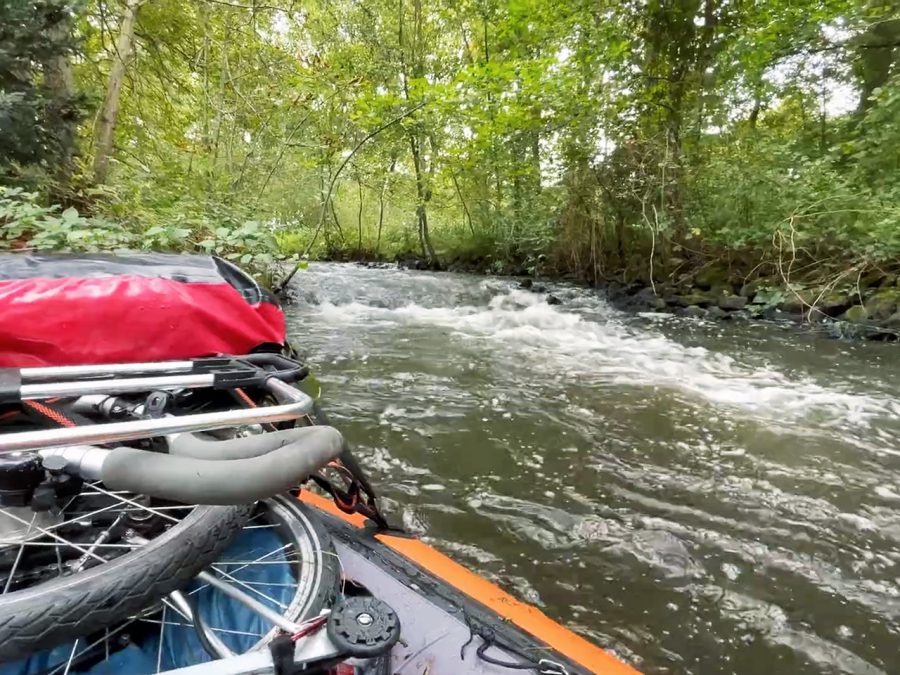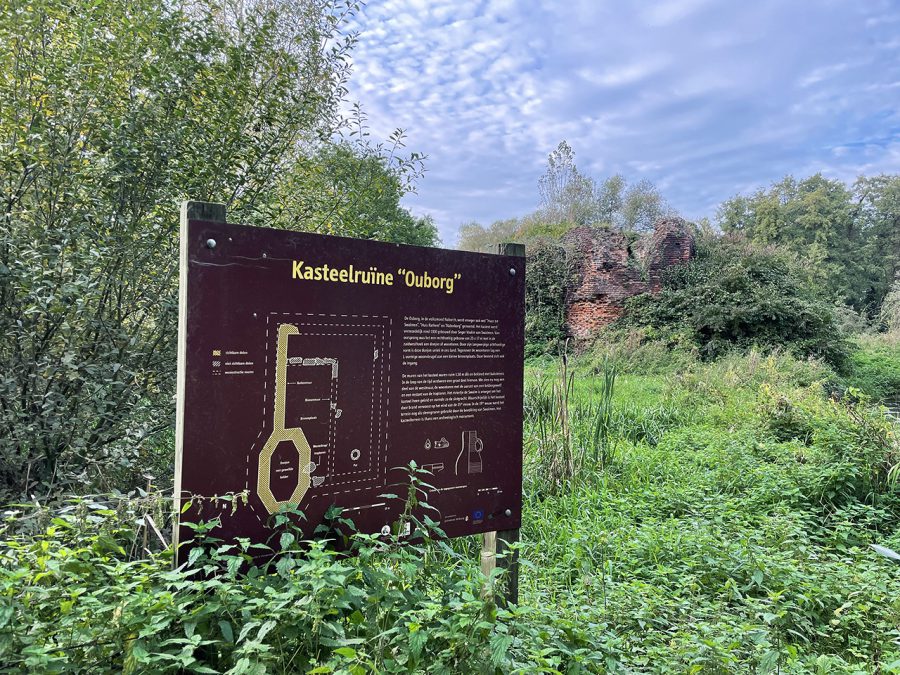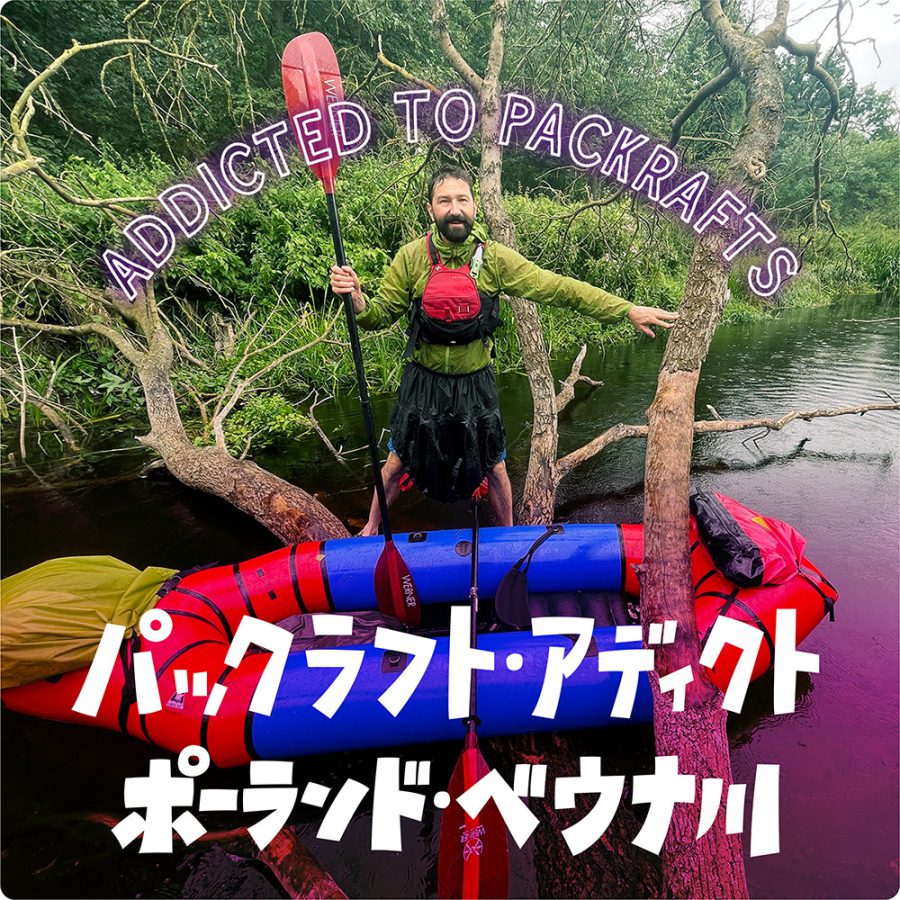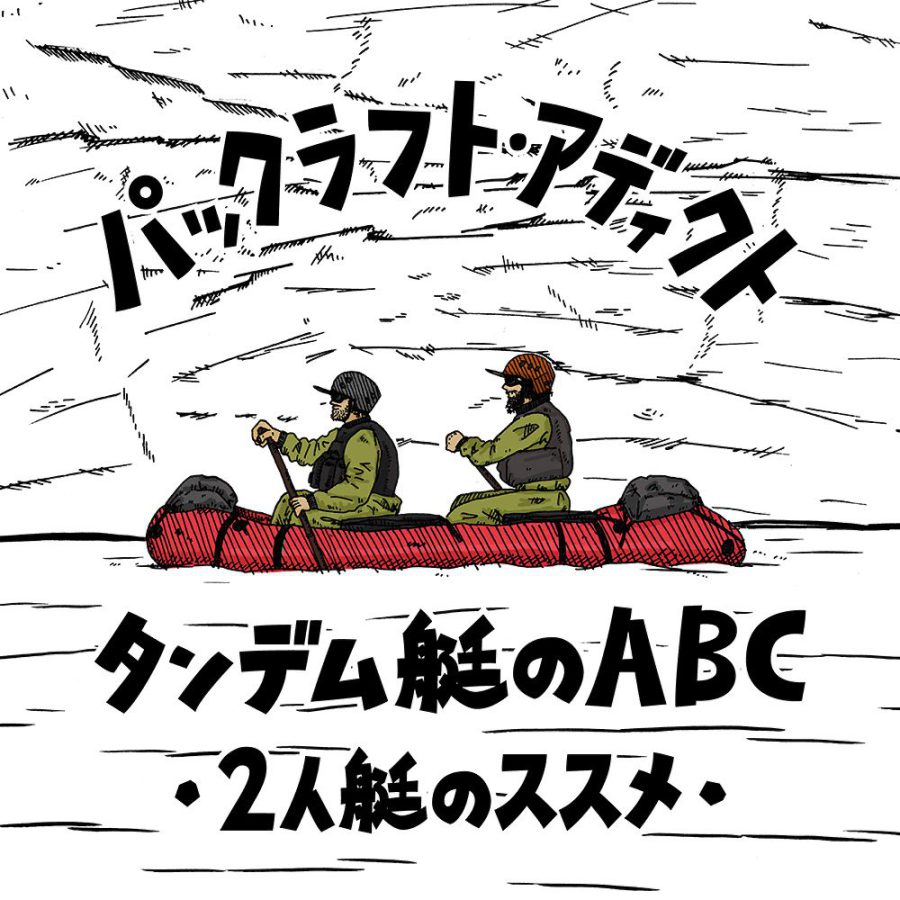パックラフト・アディクト | #57 オランダのスワルム川で、バイクラフティング

Bikerafting Microadventure on the Swalm, the Netherlands
The Swalm is a free-flowing little river in the south of the Netherlands. It springs in Germany to the south of the town of Wegberg and flows for 45 km until it reaches the Meuse. For the last 12 km it flows through the Netherlands, where it preserved some of its natural course, with multiple meanders. In Germany, however, it has been heavily canalised. This makes the Swalm, according to some, one of the most beautiful natural rivers in the country. And that was what I wanted to see as well.

The first time I learned about the Swalm was more than 8 years ago, when I was looking for some ‘wild’ rivers in the Netherlands to paddle. I also came across an article in a well-known Dutch adventure magazine about a packrafting microadenture on the river. The article was written by a famous Dutch adventurer, Jolanda Linschooten, who described the Swalm as “one of the Netherlands’ most beautiful fast-flowing streams.” Since then, I thought about paddling the river a number of times, but never actually had a chance to do that – partially because of the distance from where I live, but partially, because of the prohibition on paddling during Spring and Summer months (you are only allowed to paddle it from October 1 until March 31 from sunrise to sunset).

The chance came last October, when I had to bring my wife and our daughter to the airport in Eindhoven, from where they were flying to Poland to visit the family. And as I had to be in the south of the Netherlands early in the morning anyways, I decided to grab this opportunity and do a few things in the area, one of which was paddling the Swalm.

My idea was to start from the border with Germany and paddle all the way to the point where the Swalm flows into the Meuse, which is a reasonable distance. Should I have had more time, I would have enjoyed walking back, but knowing that I would probably have some time pressure, I decided that it would be better to take my Brompton, a folding bike, and make this a bikerafting microadenture. I specially bought this bike many years ago to use in combination with a packraft. The advantage of a Brompton is that it folds very small and you can easily position it on the bow of a packraft. I have used it on a number of occasions both in conjunction with a car and public transport or on its own.

And so, on October 18, having said goodbyes to my family at the airport in Eindhoven, I visited a small town in Limburg that my students were working with that module, after which I drove to the town of Swalmen, which is located on the river. According to the maps, the best place to park my car was just outside the town, close to the open-air swimming pool. As a matter of fact, I had read that this was one of the places where you could start paddling.

However, my intention was to cycle up to the border with Germany and start from there. And that was what I did. Well, almost. When I got to the border, there was no clear path to the river and I had to push my way through some bushes and jump over barbed wire to reach it. And that was a bit too much with a bike. Instead, I cycled back a few hundred meters and took a sideroad that led me to a bridge over the Swalm – a perfect place to start a trip. (Later I realised that it was the same spot that Jolanda Linschooten started her microadenture as well.)

The river there was around 5 meters wide, not too deep and had a noticeable current. The water was clean enough to see the bottom. It was rather warm, which was why, at first, I doubted if I should put a drysuit.

Good thing I did – the first part of the river was going through a forest and where you have a forest you often have fallen trees, which I discovered very soon. Usually that would not have been a problem as the experience (please see my articles about packrafting the Lobzonka in Poland two years ago) has already taught me well how to climb over such obstacles without stepping into the water. However, this time I had a bike strapped to my packraft, which made it significantly more difficult to do such acrobatic manoeuvres and I was forced me to stand in the water a lot more. The raft became much higher as well and, in some cases, when the trees were hanging some 40-50cm over the river, I had to lifting it over, instead of pushing it under them (as I would normally do).

Besides multiple fallen-over trees, there was a ‘surprise’ rapid, which I did not expect at all. It was just a small one, but nevertheless a fun addition to the trip. There were also a number of small pedestrian and car bridges crossing the river. Under two of them I saw geocaches – great hiding places as you really need to go into the water to be able to reach them.

Slowly the forested banks of the Swalm gave way to first fields and then houses as the river entered the town that got its name from the stream. In the centre, the river is more canalised, and it passes next to an old water mill and a large modern paper factory. Just below it, the traces of beavers were visible.

Another surprise discovery waited me on the other side of two massive bridges (a motorway and a railway one) – ruins of a medieval castle Ouborg, which I stepped out to explore. According to the information panel, the castle was likely built around 1300 but has been a ruin since the end of the 15th century, which makes it one of the oldest castle ruins in the country. What I found interesting is that that castle was made of red bricks – almost the same red bricks you can see in any part of the Netherlands even now. And that makes sense – there are hardly any places where you can find natural stone here, whereas there is plenty of clay.

Due to all the tree-climbing, the progress was significantly slower that I hoped for, and soon I realised that I had not even covered two thirds of what I planned to do – it took me almost three hours to paddle 7.6 km. I was also getting tired and considering still a long drive home, I decided to step out, pack and cycle back.

The way back took along the castle ruins, under the railway and the motorway bridges and through the town centre. Just behind the bridges, the final surprise of the day was waiting for me – the bike track took me next to a private house the garden of which was filled with dozens of fairy-tale houses, castles, huts, ruins and whatnot. It was a sight to behold. I spent there a good couple of minutes mesmerised by this, thinking that it would be a great place to show to my daughter. And, maybe, if we come here next time, we could paddle the Swalm again and finish what I did not manage to do.

- « 前へ
- 2 / 2
- 次へ »
TAGS:














 ULギアを自作するための生地、プラパーツ、ジッパー…
ULギアを自作するための生地、プラパーツ、ジッパー…  ZimmerBuilt | TailWater P…
ZimmerBuilt | TailWater P…  ZimmerBuilt | PocketWater…
ZimmerBuilt | PocketWater…  ZimmerBuilt | DeadDrift P…
ZimmerBuilt | DeadDrift P…  ZimmerBuilt | Arrowood Ch…
ZimmerBuilt | Arrowood Ch…  ZimmerBuilt | SplitShot C…
ZimmerBuilt | SplitShot C…  ZimmerBuilt | Darter Pack…
ZimmerBuilt | Darter Pack…  ZimmerBuilt | QuickDraw (…
ZimmerBuilt | QuickDraw (…  ZimmerBuilt | Micro Pack …
ZimmerBuilt | Micro Pack … 














